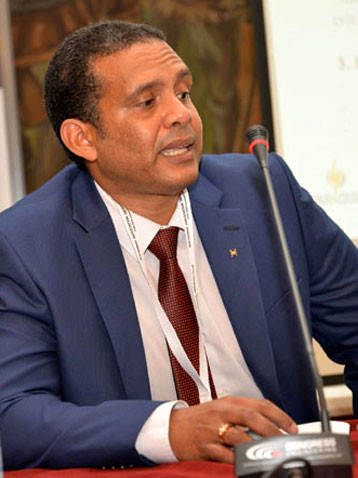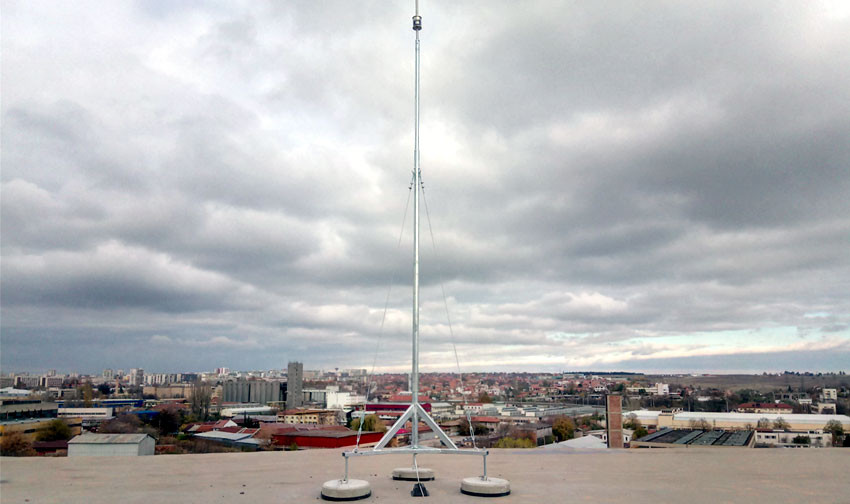The first month of this summer traditionally brings plenty of thunderstorms. However, they took human lives. One of the people was struck by lightning at a playground in Bulgaria’s capital Sofia. Many houses in Bulgaria were burned to ashes by lightning. As a result, the problems related to the development, the construction and the maintenance of the lightning protection were put on the agenda in this country. Then, the discussions on this topic were replaced by the issue regarding the state subsidies paid to the political parties, the Veterinary Practice Act and will be perhaps postponed until the next portion of tragic incidents occurs. In fact, the lightning strikes incidents have increased globally which is due to the global warming. The big question is whether we have a proper prevention? There is no accurate statistics in this field in Bulgaria, engineer Ernesto Noriega Stefanov, expert lightning and surge protection and grounding told Radio Bulgaria. Are there any risk zones in Bulgaria with regard to thunderstorms?
 Bulgaria does not have a network which registers lightning strikes in real time. According to the map of the Bulgarian regions, Sofia is among the areas with highest intensity of thunderstorms and highest number of lightning per 1 square kilometer-12, while 5 lightings per square kilometer are registered in Bulgaria on average. However, the Regulation No4 on lightning protection is old, because it was adopted back in 2010. In my view, the map should be updated which would help the designers- one of the criterions to determine the risk level of the buildings is the intensity of lightning strikes in a certain region, engineer Noriega points out. If someone decided to design lightning protection for data center or a photovoltaic park for example, he will not find in the necessary instructions in the regulation. That is why many designers are improvising and looking for an information on the Internet. The control bodies themselves do not have the necessary capacity and the inspection ends with the grounding only.
Bulgaria does not have a network which registers lightning strikes in real time. According to the map of the Bulgarian regions, Sofia is among the areas with highest intensity of thunderstorms and highest number of lightning per 1 square kilometer-12, while 5 lightings per square kilometer are registered in Bulgaria on average. However, the Regulation No4 on lightning protection is old, because it was adopted back in 2010. In my view, the map should be updated which would help the designers- one of the criterions to determine the risk level of the buildings is the intensity of lightning strikes in a certain region, engineer Noriega points out. If someone decided to design lightning protection for data center or a photovoltaic park for example, he will not find in the necessary instructions in the regulation. That is why many designers are improvising and looking for an information on the Internet. The control bodies themselves do not have the necessary capacity and the inspection ends with the grounding only.
In Mr. Noriega’s view, another problem is linked with the fact that in Bulgaria people believe they are experts in all fields. There are many electrical installation companies which do anything, including lightning protection. Every designer here develops such protection system, while in other countries like France, Spain, Germany and the USA things look much different. There are companies in these countries specialized in development and construction of lightning protection systems, Noriega says.
 There are a maximum of 4 professional companies in this field in Bulgaria. However, they cannot cover the whole territory of the country. Thus, lightning protection systems which do not guarantee effective protection are built.
There are a maximum of 4 professional companies in this field in Bulgaria. However, they cannot cover the whole territory of the country. Thus, lightning protection systems which do not guarantee effective protection are built.
According to the European regulations, if a lightning strikes a lighting protection system, the whole system is subject to inspection. Lightning counters should be installed as well. The system must be certified again after it is struck by a lightning. The lightning protection on the old buildings must be well-maintained as well. In Bulgaria this is rather an exception, than a rule. Bulgaria needs stringent rules and effective control, in order to deal with these problems.
Ernesto Noriega has more:
Most playgrounds, stadiums, churches and monasteries, where hundreds of people gather in one place, do not have lightning protection systems. If you go to Istanbul, you will see that all mosques are equipped with lighting protection systems. The problem in Bulgaria is that we wait for the bad things to happen and then take measures.
And finally some practical advices from the expert what we should do when we are caught in a thunderstorm in the mountain:
We should stay away from single trees and stand near a group of trees instead, but should be at least 1 meter away from the tree. We must not speak on the mobile, open an umbrella or hold a fishing rod. In order to reduce the level of danger, we should crouch down as low as you can without touching the ground and wait until the storm is gone.
In engineer Noriega’s view experts must work with children at school to ensure prevention and he himself is ready to help the development of information brochures. This would help build a common culture among the population in this field.
English version: Kostadin Atanasov
Photos:paradise-electric.eu
A Bulgarian-designed electric vessel has gained international recognition , reaching the final round of the prestigious Gussies Electric Boat Awards 2025 . The awards celebrate the world’s most innovative and sustainable electric boats and yachts,..
A case of a dog run over by a doctor in a district of Sofia has caused a wave of public indignation and a protest in Sofia, which will take place today in front of the Military Medical Academy - the medical institution where the medic..
Forty Bulgarian schools in 22 US states have become a second home for the children of Bulgarian emigrants. They create continuity between generations and teach about Bulgarian history, traditions, and culture. They also create..

+359 2 9336 661
